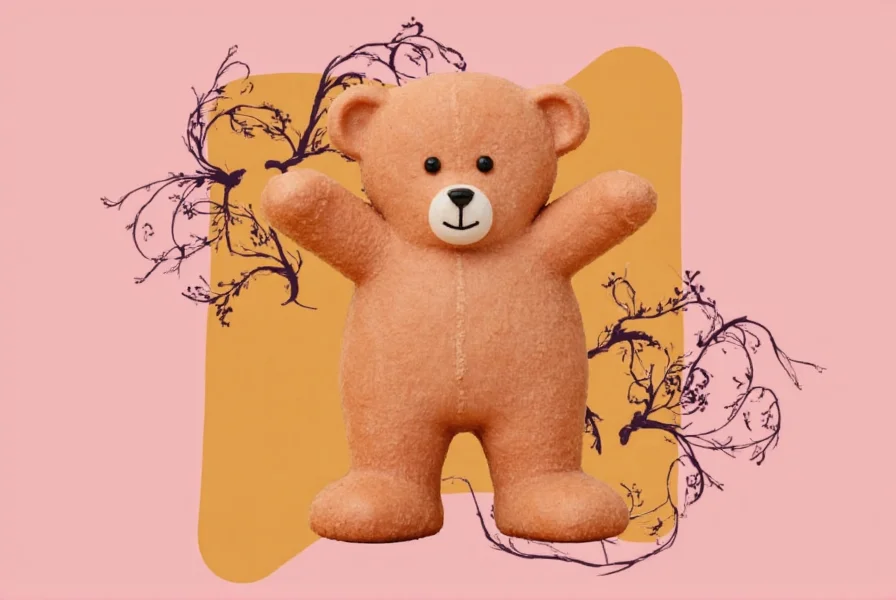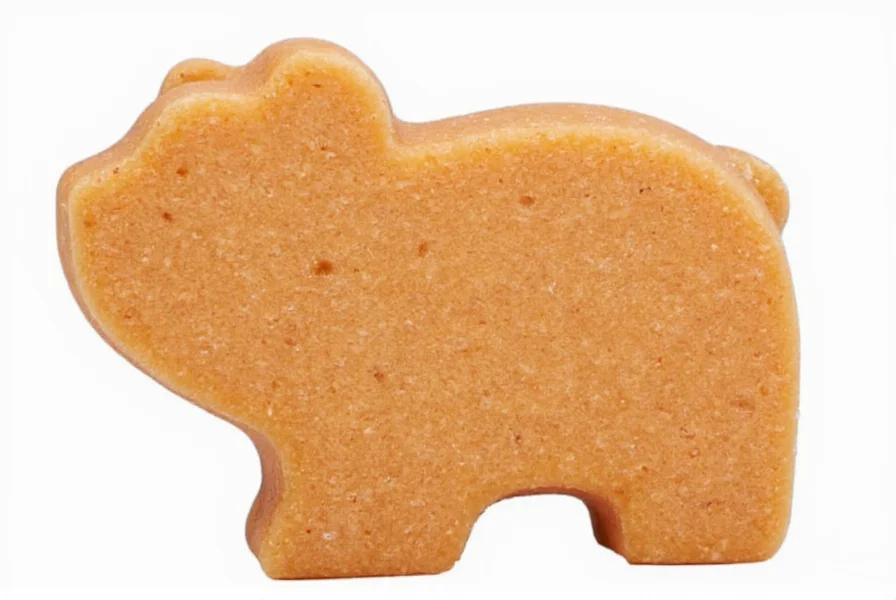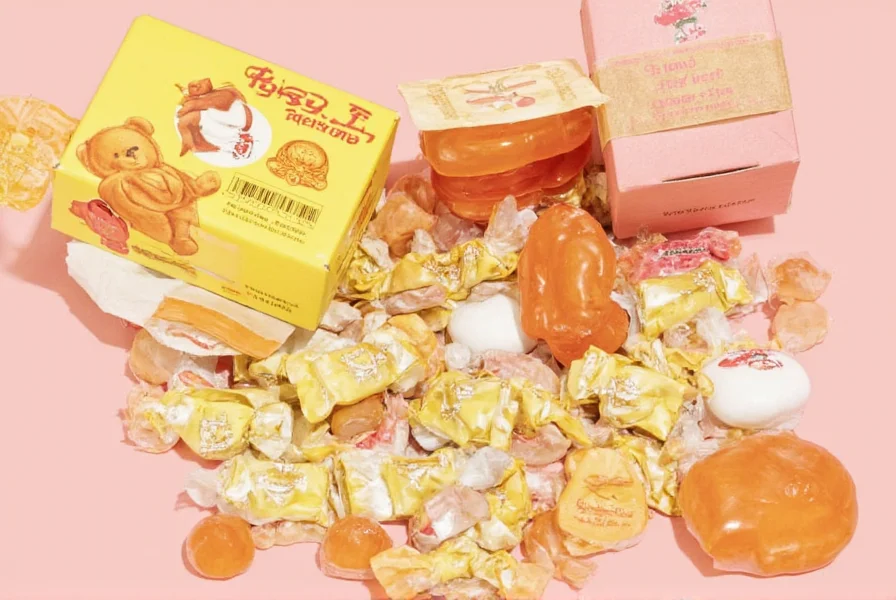Ginger bears represent a distinctive category within the gummy candy market, offering a spicy alternative to conventional fruit-flavored options. These chewy confections combine the familiar gummy bear texture with the warm, slightly pungent flavor of ginger. Unlike regular gummy bears that rely on fruit flavors, ginger bears incorporate real ginger extract or ginger powder to achieve their characteristic taste profile.

Understanding Ginger Bear Candy
Ginger bears belong to the specialty gummy segment that has grown significantly in recent years. Major confectionery manufacturers like Haribo, Albanese, and other regional producers have introduced ginger-flavored variants to cater to consumers seeking more complex flavor experiences. These candies typically feature:
- A chewy, gelatin-based texture similar to traditional gummy bears
- A distinctive golden-orange color reflecting the ginger ingredient
- A flavor profile that balances sweetness with ginger's natural spiciness
- Potential inclusion of real ginger extract for authentic flavor
The ginger content in these candies varies by manufacturer, with premium versions often containing higher concentrations of actual ginger. This gives them a more pronounced spicy kick compared to standard fruit gummies. Some specialty producers even offer "extra spicy" versions for consumers who prefer a stronger ginger experience.
Ginger Bear vs. Ginger Beer: Clearing Up Common Confusion
One of the most frequent points of confusion involves mistaking "ginger bear" for "ginger beer." This misunderstanding occurs regularly in search queries and casual conversation. The table below clarifies the key differences:
| Feature | Ginger Bear | Ginger Beer |
|---|---|---|
| Type | Gummy candy product | Carbonated beverage |
| Primary Ingredients | Gelatin, sugar, ginger extract, corn syrup | Ginger root, sugar, carbonated water, yeast |
| Texture | Chewy, solid | Liquid, carbonated |
| Flavor Profile | Sweet with spicy ginger notes | Spicy, tangy, sometimes fermented |
| Common Brands | Haribo, Albanese, Trolli | Fever-Tree, Bundaberg, homemade |
This confusion likely stems from the similar-sounding names and the shared ginger ingredient. When searching for information about ginger bears, many consumers initially encounter results about ginger beer due to this common mix-up. Understanding this distinction helps consumers find the correct product information they're seeking when asking what is ginger bear.
History and Development of Ginger-Flavored Candies
Ginger's use in confectionery dates back centuries, with historical records showing ginger candies in Europe as early as the 16th century. However, the specific gummy bear format featuring ginger flavor is a more recent innovation. The traditional gummy bear was invented in 1922 by Hans Riegel of Bonn, Germany, but ginger-flavored variations didn't emerge until much later.
The introduction of ginger bears reflects broader trends in the confectionery industry toward more sophisticated flavor profiles. As consumers have become more adventurous with their taste preferences, manufacturers have expanded beyond basic fruit flavors to include spices, herbs, and more complex combinations. Ginger bears particularly appeal to adults seeking nostalgic candy experiences with a more mature flavor profile.
Production Process and Ingredients
Manufacturing ginger bears follows a process similar to other gummy candies but with specific adjustments for the ginger flavor:
- Mixing: Gelatin, sweeteners, and water are combined and heated
- Flavoring: Ginger extract or powder is added at precise concentrations
- Molding: The mixture is poured into bear-shaped molds
- Drying: Candies are dried to achieve the proper chewy consistency
- Coating: Some varieties receive a light sugar or citric acid coating
The quality of ginger bears largely depends on the ginger ingredient used. Premium products incorporate real ginger extract rather than artificial ginger flavoring, resulting in a more authentic taste experience. The concentration of ginger also varies significantly between brands, with some offering a subtle ginger note while others deliver a pronounced spicy kick.
Where to Find Ginger Bears
Ginger bears have become increasingly available as specialty candy options. You can typically find them in:
- Major grocery stores with expanded candy sections
- Specialty candy retailers both online and brick-and-mortar
- International food stores carrying European confectionery
- Online marketplaces like Amazon and specialty candy websites
Haribo's ginger bear variant remains one of the most widely available options globally, though regional variations exist. In some markets, local confectioners produce their own versions with unique twists on the classic ginger bear formula. When searching for where to buy ginger bears, checking both mainstream and specialty candy retailers yields the best results.

Nutritional Profile and Health Considerations
Like all gummy candies, ginger bears contain significant sugar content, but they also offer potential benefits from the ginger ingredient. A typical serving (about 10 pieces) generally contains:
- Approximately 120-150 calories
- 25-30 grams of carbohydrates (primarily sugars)
- 2-3 grams of protein from gelatin
- Minimal fat content
The ginger component provides potential digestive benefits that regular gummy bears lack. Ginger has been studied for its ability to:
- Support digestion and reduce nausea
- Provide anti-inflammatory properties
- Offer antioxidant benefits
However, consumers should note that the ginger content in most commercial ginger bears is relatively low compared to therapeutic doses. While they may provide mild digestive benefits, they shouldn't be considered a significant health product due to their high sugar content. Those seeking ginger's health benefits might consider combining moderate ginger bear consumption with other ginger-containing products.
Consumer Trends and Market Position
Ginger bears occupy a unique niche in the candy market, appealing primarily to adult consumers seeking more sophisticated flavor experiences. Market research indicates several notable trends:
- Increasing demand for "grown-up" candy options beyond traditional children's flavors
- Stronger sales in regions with established ginger consumption habits
- Higher price points compared to standard gummy bears due to specialty ingredients
- Seasonal spikes in sales during holiday periods when gift sets are popular
Understanding these trends helps explain why more manufacturers are expanding their ginger bear offerings. The product successfully bridges the gap between nostalgic candy experiences and adult flavor preferences, making it a resilient segment within the confectionery market.
Is ginger bear a real candy product or just a common misspelling?
Ginger bear is a genuine candy product, not just a misspelling. It refers specifically to ginger-flavored gummy bears produced by several confectionery companies, most notably Haribo. While often confused with "ginger beer," ginger bears are a legitimate specialty candy item available in many grocery and specialty candy stores.
What makes ginger bears different from regular gummy bears?
Ginger bears differ from regular gummy bears primarily in their flavor profile and ingredients. While standard gummy bears use fruit flavors, ginger bears incorporate real ginger extract or powder, giving them a distinctive spicy-sweet taste. They often have a slightly different coloration (more golden-orange) and may contain additional ingredients to complement the ginger flavor.
Do ginger bears actually contain real ginger?
Quality ginger bears do contain real ginger extract or powder, though the amount varies by manufacturer. Premium brands typically use higher concentrations of actual ginger rather than artificial flavoring. The presence of real ginger gives these candies their characteristic spicy kick and potential mild digestive benefits, distinguishing them from artificially flavored alternatives.
Where can I find ginger bears if they're not in my local stores?
If ginger bears aren't available locally, several online options exist. Major retailers like Amazon carry various brands of ginger bears, and specialty candy websites often stock them year-round. International grocery sites can be particularly good sources for authentic European varieties like Haribo's ginger bears. Some craft candy makers also offer artisanal versions through platforms like Etsy.
Are there any health benefits to eating ginger bears?
While primarily a treat, ginger bears offer some potential benefits from their ginger content, including mild digestive support and anti-nausea properties. However, these benefits are limited due to the relatively small amount of ginger compared to the candy's sugar content. They shouldn't be considered a health product, but moderate consumption may provide some of ginger's traditional benefits in a more enjoyable format than plain ginger supplements.











 浙公网安备
33010002000092号
浙公网安备
33010002000092号 浙B2-20120091-4
浙B2-20120091-4